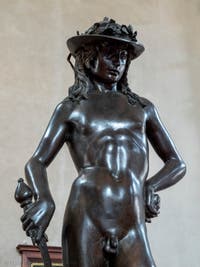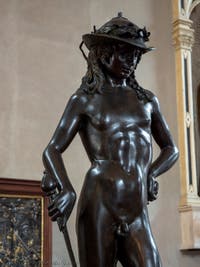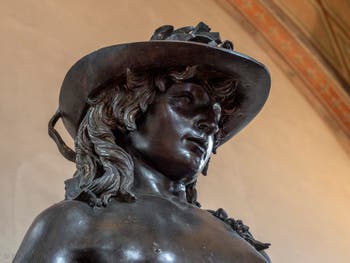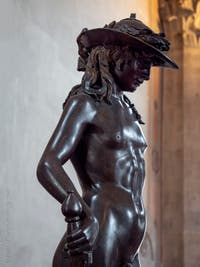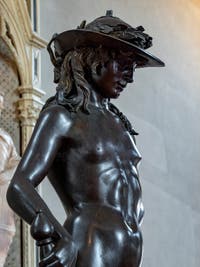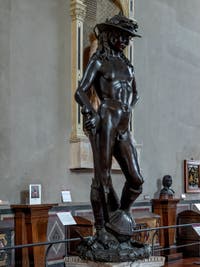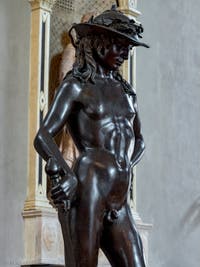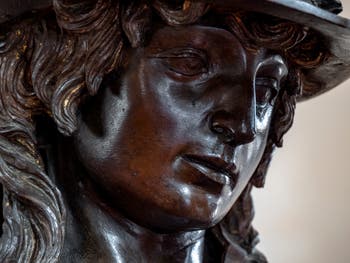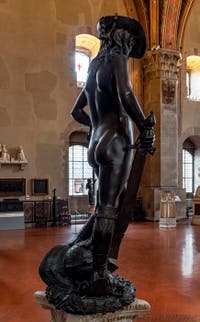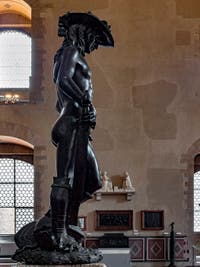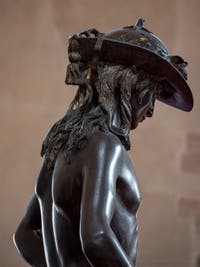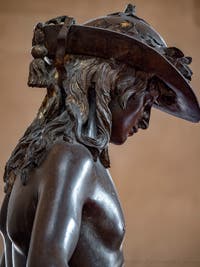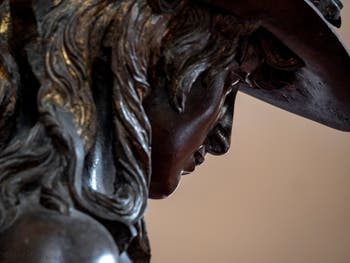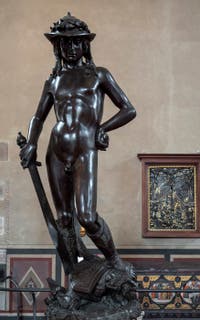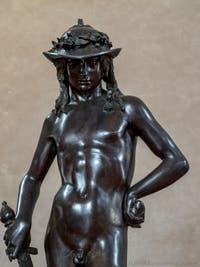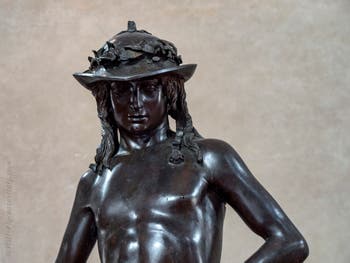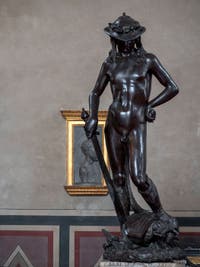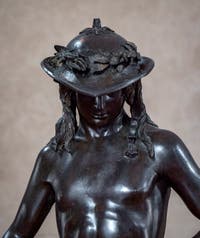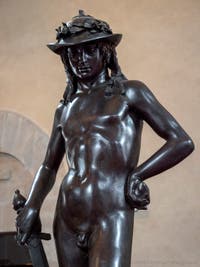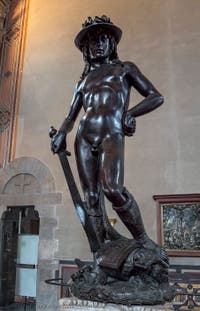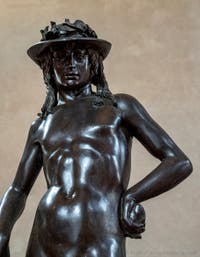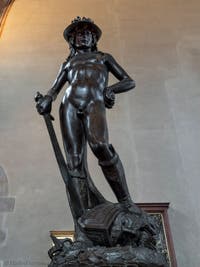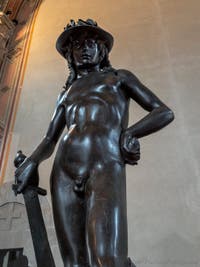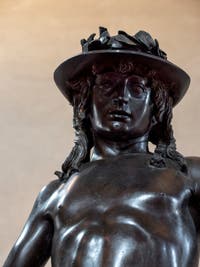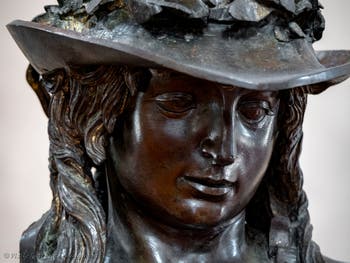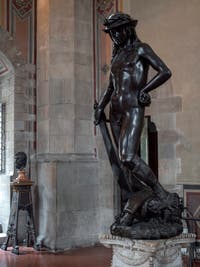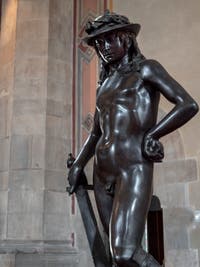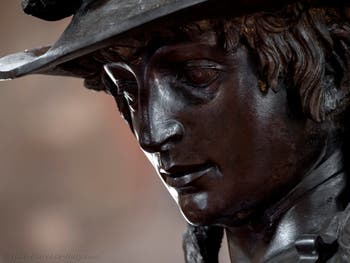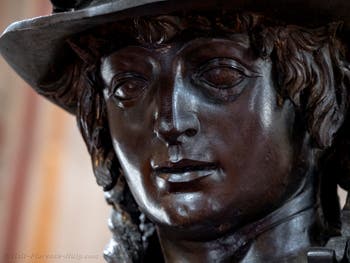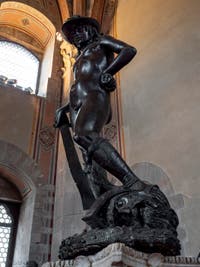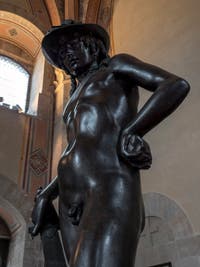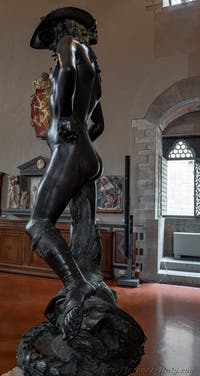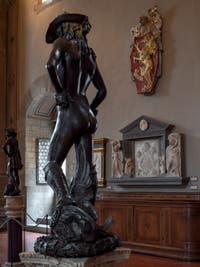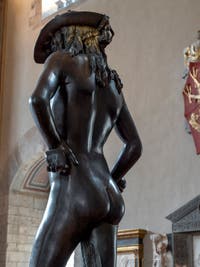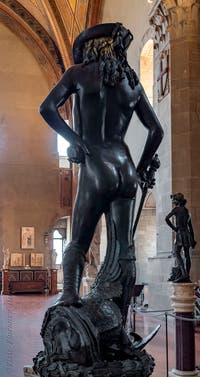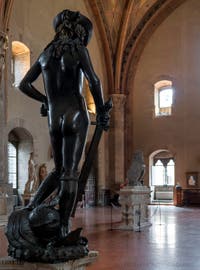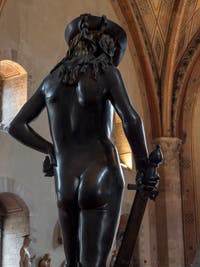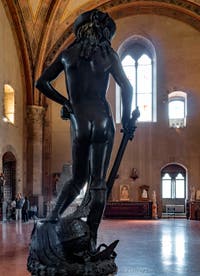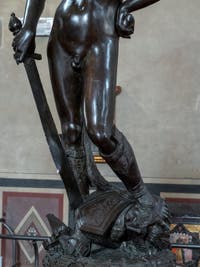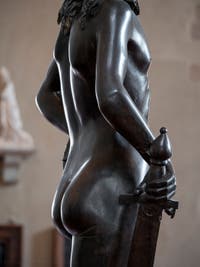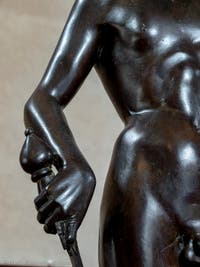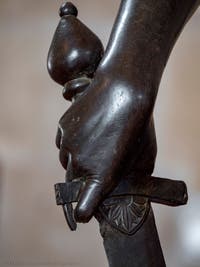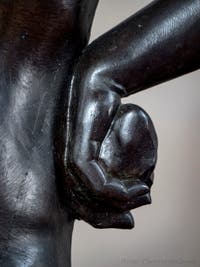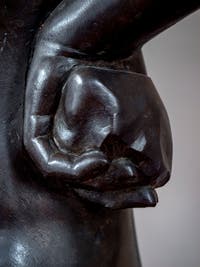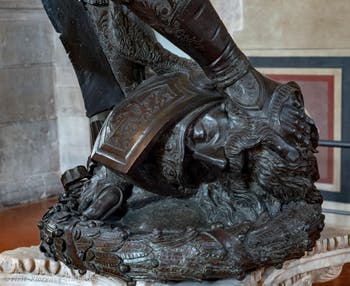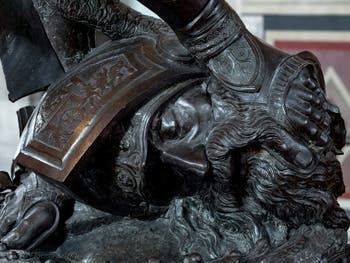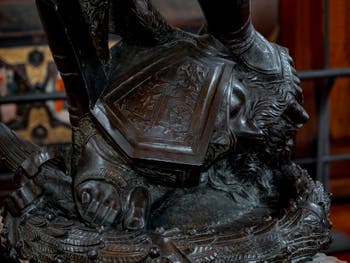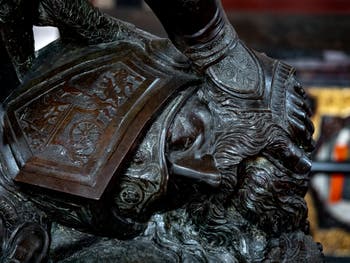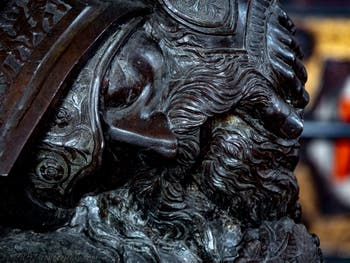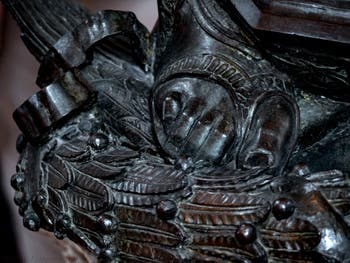Bargello Art Story | Location | Opening Hours Tickets | Authorizations
Art Story Donatello | Michelangelo | Cellini | Verrocchio | Giambologna | Cambio Ammannati | Earthenwares | Ivories | Palace
Donatello David | Marbles | Bronzes
Donatello’s bronze “David” at the Bargello Museum in Florence
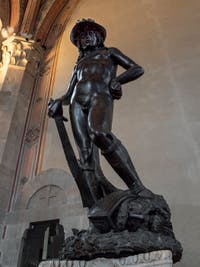
Donatello, David
Donatello “David”
Sculpture - Bronze (158 x 51 cm) 1430-1440Created between 1430 and 1440, Donatello’s “David” was the first human-sized bronze statue of a nude presented without an architectural background since Antiquity.
The statue is presented “at Tutto Tondo” so that you can turn around to admire it from all sides.
This magnificent work was the decisive result of Donatello’s evolution, who had begun to break with the Gothic tradition with his marble statues of Saint Mark, Saint George and David, thus marking the beginnings of Renaissance sculpture.
His marble statues already showed a certain mastery of human anatomy and balance, with drapes that no longer had the International Gothic lines that had prevailed until then.
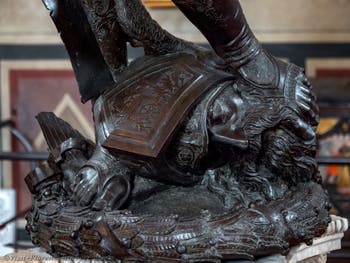
Donatello, David The other novelty consisted in presenting his marble “David” (1408) not in the traditional form of the bearded king of Israel singing his Psalms while playing the lyre but in the state of the young man who defeated Goliath, whose severed head lay at his feet.
With this bronze statue, Donatello’s evolution reached perfection by presenting David as a very young victorious shepherd who had just killed and cut off the head of the gigantic warrior who threatened the freedom of his people.
In Florence, the image of David as a triumphant young hero had thus replaced that of the great prophet king.
David, the teenager, wins the brute-force
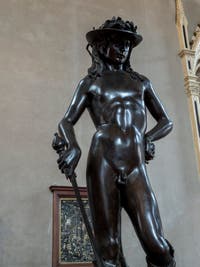
Donatello, David Donatello’s bronze “David” is naked; he is a young, frail teenager who has not yet reached adult size, wearing a strange hat, with one foot carelessly placed on Goliath’s big, helmeted head.
David poses as the conqueror of the mighty warrior whose head he cut off, who lies at his feet with the great sword in his right hand.
The attitude of Donatello’s “David” highlights the beauty of his supple body Ephebius with emerging muscles, and gives him the natural and relaxed look of a young conqueror, which contrasts with the iron of the big sword and the rigidity of the Goliath helmet whose features are frozen by death.
This statue combines ancient ideals and naturalness based on a living model, a remarkable alliance of the nobility and serenity of ancient statuary with the suppleness of a living body of a young Florentine.
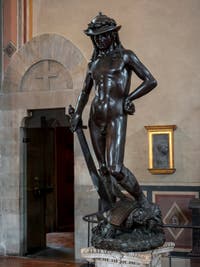
Donatello, David The flexibility of the bust is clearly shown by its wiggle to maintain balance by leaning firmly on the right leg while the left, still bent back, passes over Goliath’s head.
David is calm and relaxed, his left hand bent over the stone naturally resting on his hip, while his right hand elegantly holds Goliath’s sword.
He poses with the weapons of this unequal duel that has become legendary, the stone thrown by the naked adolescent chosen by God against the sword of a gigantic warrior protected by his armour.
Donatello represented the power of faith in God in the beauty of a bronze Ephebius.
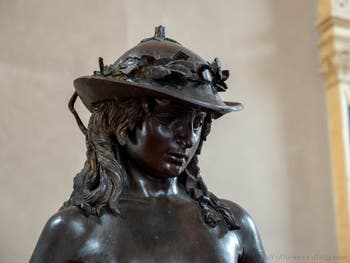
Donatello, David David’s facial features and long hair may have nothing to do with ancient statuary, but he is wearing the “petase”, the ancient Greek shepherd’s hat, where Donatello placed the winner’s laurel wreath.
David, the young shepherd, wears Greek soldier’s leg warmers, “cnemides” engraved with fine palmettes that highlight the curve and slenderness of his legs; he is a victorious warrior who crushes the wing of his opponent’s helmet lying at his feet.
By wedging this wing under his sole, he caused the other wing to move, which gently caresses his leg.
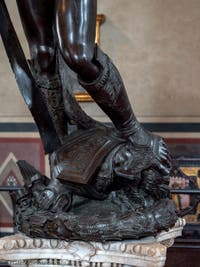
Donatello, David David, the future king of Israel, wears leg warmers decorated with finely carved palmettes, a true goldsmith’s work intended for a high-ranking warrior.
Goliath’s head is a masterpiece of realism. His beard is magnificent, and the ornaments on his winged helmet are worthy of a great general.
The helmet’s visor shows a group of winged putti joyfully pulling the cart of Eros, a dynamic and delicate scene inspired by a small engraved stone dating from Greek Antiquity belonging to Cosimo de Medici, who commissioned the statue.
The presence of this Greek art element on the vanquished helmet was a sign of the victory of the Judeo-Christian faith over ancient paganism.
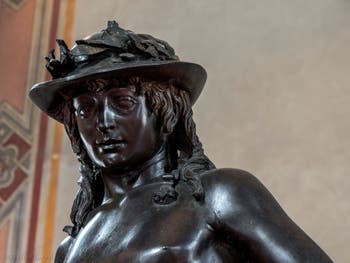
Donatello, David With the body of Apollo and the delicate face of a determined and modest Florentine teenager, Donatello’s “David” has the dignity of an ancient hero who maintains a divine calm in the joy of victory.
It was meant to become the object of secular worship rendered by the humanist scholars of the Renaissance, as well as a political symbol for Florence threatened by great enemy powers.
The oldest document mentioning Donatello’s “David” dates from 1469, saying that he was installed on a polychrome marble column in the courtyard of the Medici Palace during the celebration of the marriage of Lorenzo the Magnificent to Clarice Orsini.
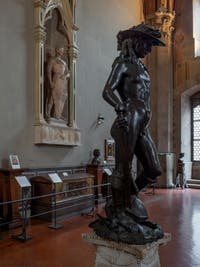
Donatello, David In 1495, the Theological Republic of Savonarola banished the Medicis and seized their property, and decided to display the “David” in Palazzo Vecchio, where his government was sitting.
David thus became a comforting symbol of freedom for Florence, threatened by powerful neighbours.
In 1777, it was installed in the Modern Sculpture Room of the Uffizi Museum, then in the Bargello during the second half of the 19th century.
During its restoration in 2007, traces of gilding were discovered, showing that it was originally gilded. These traces of gold are visible in “David” ’s hair.
Donatello David | Marbles | Bronzes
Art Story Donatello | Michelangelo | Cellini | Verrocchio | Giambologna | Cambio Ammannati | Earthenwares | Ivories | Palace
Bargello Art Story | Location | Opening Hours Tickets | Authorizations
Back to Top of Page


